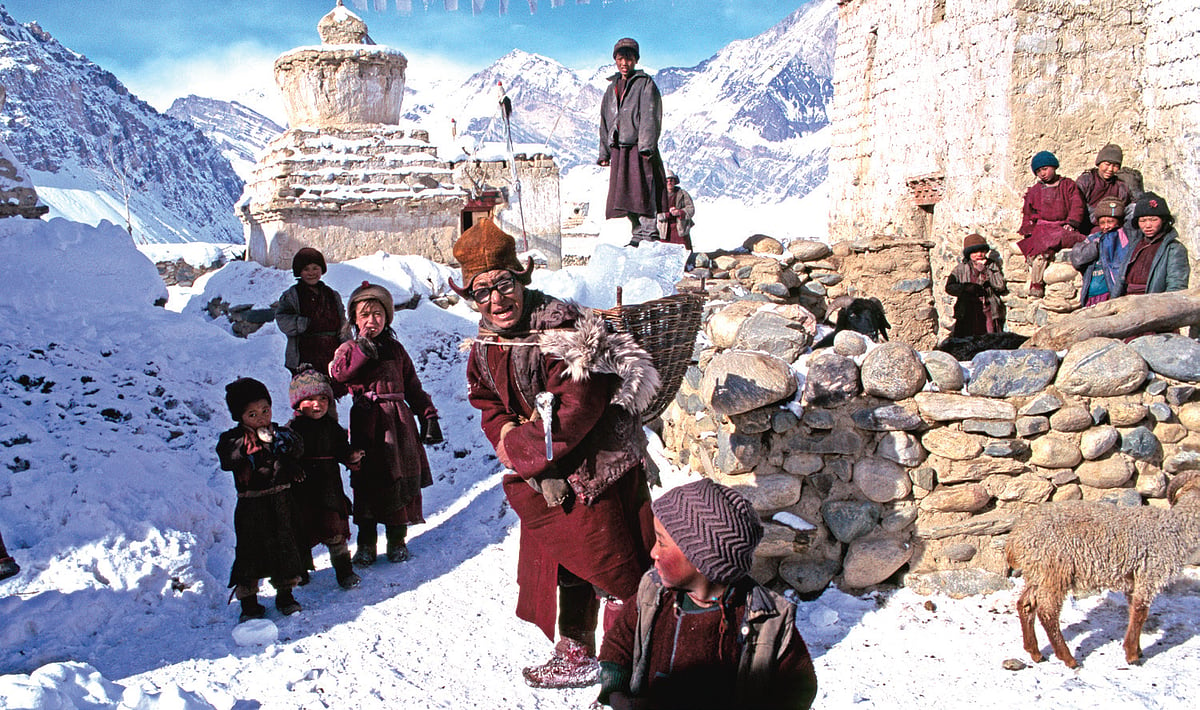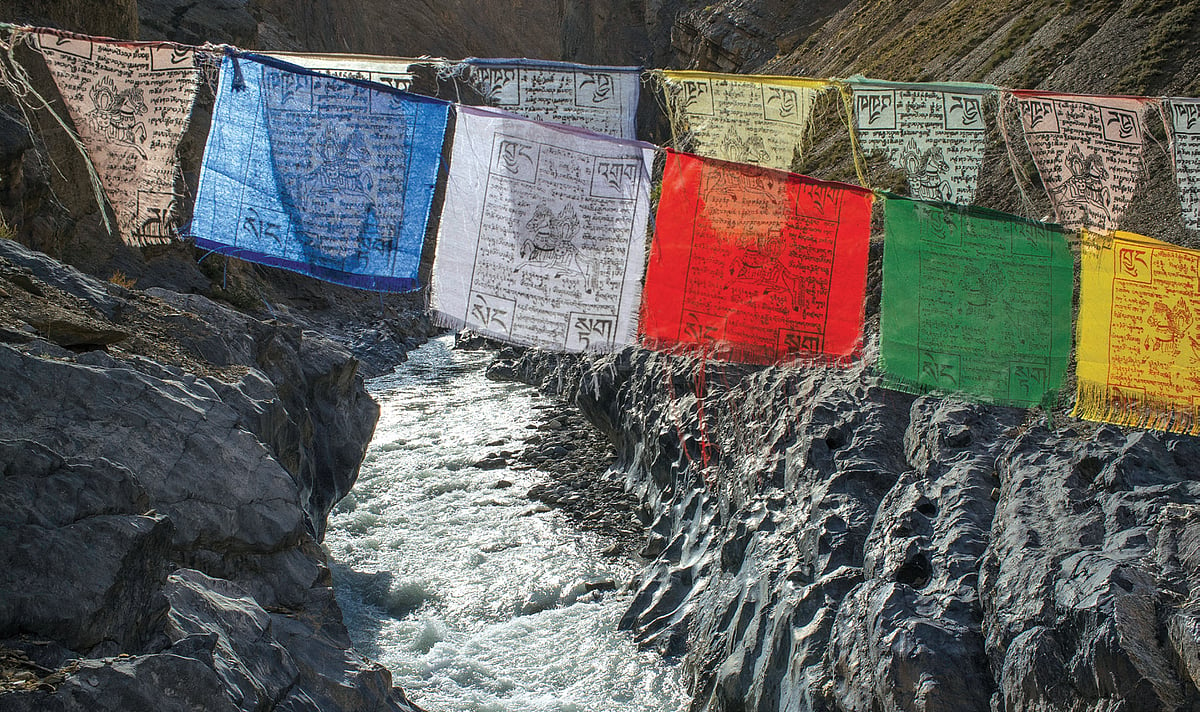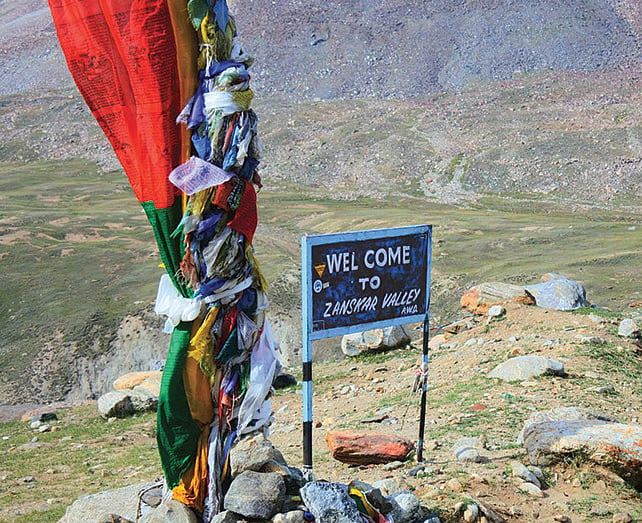My ode to Zanskar
The biggest allure of Zanskar is its remoteness. You’ll barely cross five cars or bikes through the entire route and maybe the same number of people

When I was researching about the trip, I was in two minds about going to Zanskar. It’s far more remote than the great lakes, and it is a minimum of 2 to 3 days by road from Kargil. ‘By road’ is actually an exaggeration: It’s basically a mud track. It is a rocky terrain and it is perhaps the worst “road” you will ever travel on. Unless, of course, you have lived in Bihar and Jharkhand of yore.
The key to enjoying Zanskar is zero expectations. Believe every horror story about the road you hear. Internalise it. Think about the horrible time you are going to have being on the road for three days and how it’s never going to be worth it.
But you absolutely must go there. Zanskar is worth it. Just the drive from Kargil to Zanskar through the Suru valley, the solitude of Rangdum, the Drang Drung glacier, the Phuktal and Bardan monasteries: They are worth all the pain you will endure on this journey
And while I don’t want to scare you, I still suffer from a stiff neck that I first felt on my journey to Zanskar. They were building a road from Manali to Leh, which would go through Zanskar; so maybe things have improved in the past year. But on this day last year, I was sitting on a rock near Tso-Moriri, crying about the impending journey the next day. It’s a technique I use where I psyche myself out so much that I succeed in “un-psyching” myself. And like I said, I have a taste for the dramatic. Why waste the opportunity of sitting on a rock with the waves of a great big mountain lake crashing around you to add to your entirely manufactured doom and gloom scenario? People listen to sad songs to set the mood for their heartbreak; I seek out a nicely shaped rock to ponder my self-destructive tendencies.

An important note is that, if possible, time your visit at a time when the flowers are in full bloom. The road trip from Kargil to Zanskar alone is worth it for all the flora and fauna along it.
Another note — and this is something else I wish I had done in hindsight — but if you are fit and capable, trek to Zanskar. This is true for most of Ladakh but Zanskar in particular.
The air is just so pure there because it’s the least motorable place within Ladakh. The wildlife, which has started to be affected by tourism in the rest of Ladakh, is still holding its own here. All the tiny villages you cross on your way, all the stretches of the road that wind their way along the rivers and streams, and the big plain windy green lands that are entombed by the mountains on all sides, they all stay with you.
Another point to note is to carry enough cash to pay for all your expenses in Zanskar valley. Your phone will not work here. Neither will your cards. Internet is only available at an expensive rate and maybe for an hour each day. Hence ATMs are also in short supply. Expect to pay for everything in cash.
The main town in the valley is Padum. One must be measured in expectations from this town. It’s a tiny town which offers basic necessities and nothing much more. The opening of a pizza place was the main noteworthy point of discussion in my conversations with the locals.
The food available is very basic, especially if you are a vegetarian. Prepare to have peas in everything you eat. The old French man from basque country that I had befriended at my hotel would not stop raving about the chorizo (a kind of spicy Spanish pork sausage) offered at the hotel I stayed in.
In Zanskar, variety for a vegetarian is in short supply. So, if you happen to be a foodie, beware, the omnipresent peas. I mostly survived on copious amounts of Maggi and chilly mushrooms served with rice. In terms of food recommendations then, I’m afraid I’d have to defer to my friend Luis' suggestion of the chorizo served at hotel Ibex.
It was during my trek to Phuktal Monastery that I got a taste of the “pay it forward” mentality of the people of Ladakh. All through the drive to the trek starting point, I saw people waiting for passing cars to give them a lift into town and I saw every car stop for them. The conditions they live in means that there is an inherent understanding among the Ladakhi people to help when they can help. Tomorrow it could be them waiting to catch a ride to town.
While I was in Phuktal, local elections were underway. I passed by some posters of the representatives of various parties and then, not much later, I crossed a man I had been seeing in the posters, driving along ahead of us, stopping by every villager who was waiting for a lift. There is a tacit compliance to community customs here. My guide in Zanskar told me that even though the local leaders are from different parties, they often take the same car to reach the farflung villages in order to save fuel.
This commitment to sustainability and hygiene was evident even in the village of Cha, the last village before Phuktal Monastery.
The villagers would not let you wash your feet or hands in the spring water flowing right next to us because the villages downstream use the same water. This is the same “pay it forward” mentality I had sensed earlier. Even during my trek, if my guide encountered any trash along the way, he picked it up and pocketed it, to be disposed of at an appropriate place.
The character and integrity of the people I encountered was a refreshing change from the cynicism that big city life can instil in you. It is perhaps testament to how much of a cynic I had become that watching cars stop to give people a lift was surprising to me. And then to see the villagers you crossed on the trek greet each other cheerfully, offer you water if you stopped due to exhaustion, was heart-warming.
The journey to Zanskar can also humble you in the strangest of ways. Yes, you feel like this is surreal. And you feel numb and alive at the same time.
The biggest allure of Zanskar is its remoteness. You’ll barely cross five cars or bikes through the entire route. Maybe the same number of people. And it can be scary, but it is also hugely empowering.
One thing that I realised about the presence of people in the vicinity is that they block you from truly being one with nature. This struck me when I couldn’t see a house or a man as far as my eyes could see — I would suggest you going to Zanskar just for the audacity of a place in India being capable of pulling off such a feat. You are completely one with nature, even if there's a mixture of apprehension and excitement when you're there.
It might just be me, but there is a newfound respect for the wind in your face and the mountains in the distance, especially their ability to kill you when you know you don’t have the option of running “inside” for safety.
The most humbling part of the journey for me, personally, was the realisation that the villages I just crossed, the people that live in these villages, they experience this “journey”, the mud track, the remoteness, the isolation, every day. They live this life.
I’ll never forget the perspective I gained when I saw the Lamas, many barely in their teens, traversing down the monastery perched inside a cave, towards the river, just to fetch water, to then use it to go to the toilet inside the monastery. If that doesn’t make you acutely aware of your privilege, little else will.
Zanskar remains cut off from the rest of the world during the winter and the only way in and out is a helicopter from Padum. Or the renowned Chadar trek over the frozen Zanskar river.
Perhaps it is the inconvenience of the place that makes it the payout that it is, but of all the places in Ladakh, it was Zanskar that touched my soul. Yes, this is a cliche used in every travel blog, but it is the extremes that the region pulls out of you — equal amounts of frustration, pain and awe — that makes the statement the truth. In
Zanskar, the journey is the destination.
Follow us on: Facebook, Twitter, Google News, Instagram
Join our official telegram channel (@nationalherald) and stay updated with the latest headlines



